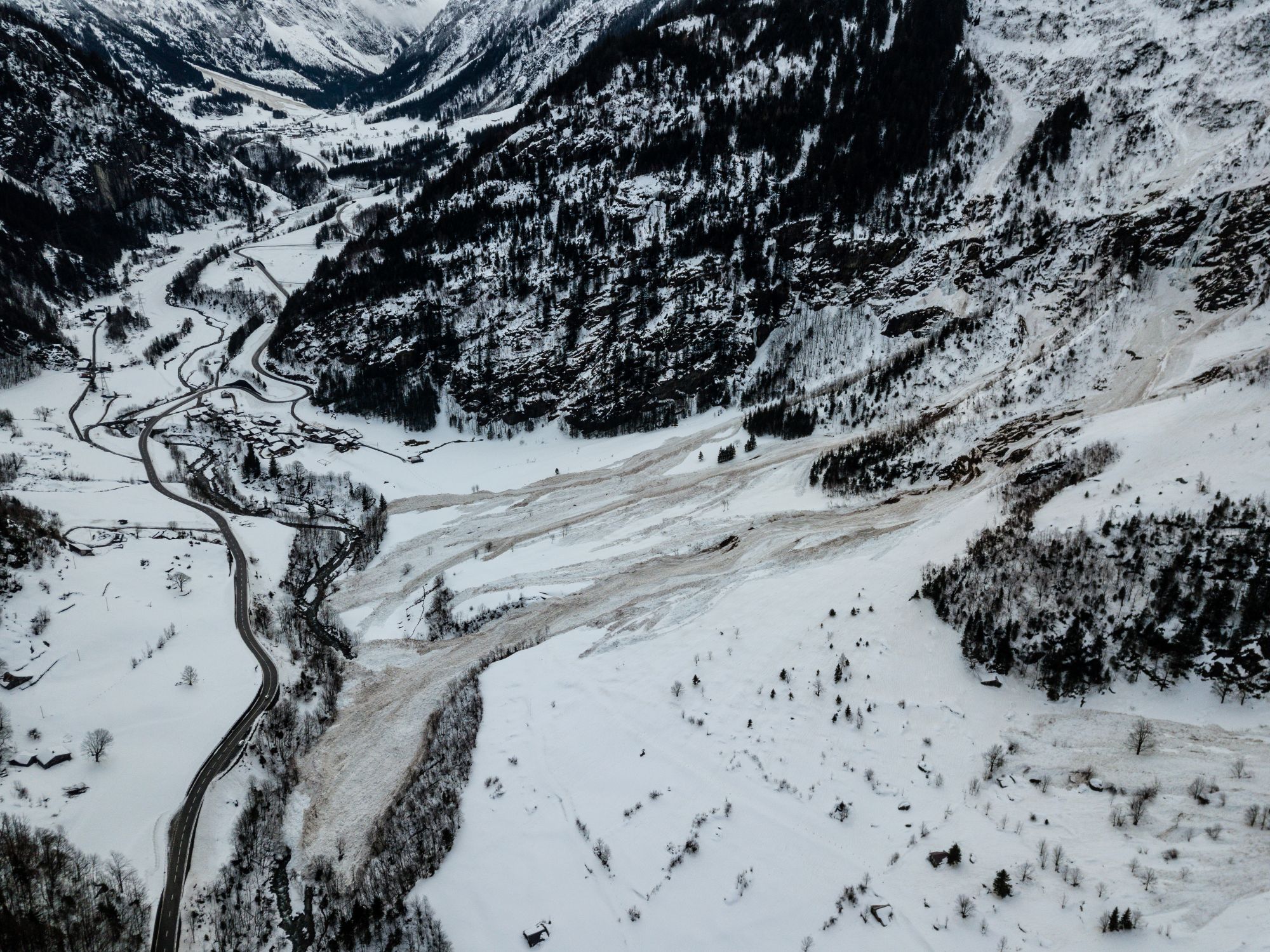The Swiss mountain village of Guttannen is under threat. Climate change is melting the glaciers, thawing the permafrost, and destabilizing the mountainsides. This has resulted in multiple severe debris flow and flooding events in recent years. Combined with outmigration, an isolated location, and limited employment opportunities, Guttannen faces an uncertain future. A future the village has come together to fight for.
Nestled between the snowy peaks of the Swiss Alps, the village of Guttannen in the Bernese Oberland is picture-postcard perfect; a place of wooden chalets and lush Alpine meadows, the gentle scenery of the valley gradually giving way to the jagged mountains above.
With a name that stems from the phrase ‘ze den guoten tannen,’ meaning by the good firs, Guttannen can be traced as far back as 1377 and, over the centuries, the people that have called the village home have weathered and adapted to the often challenging conditions that life at 1,057 meters above sea level can bring.
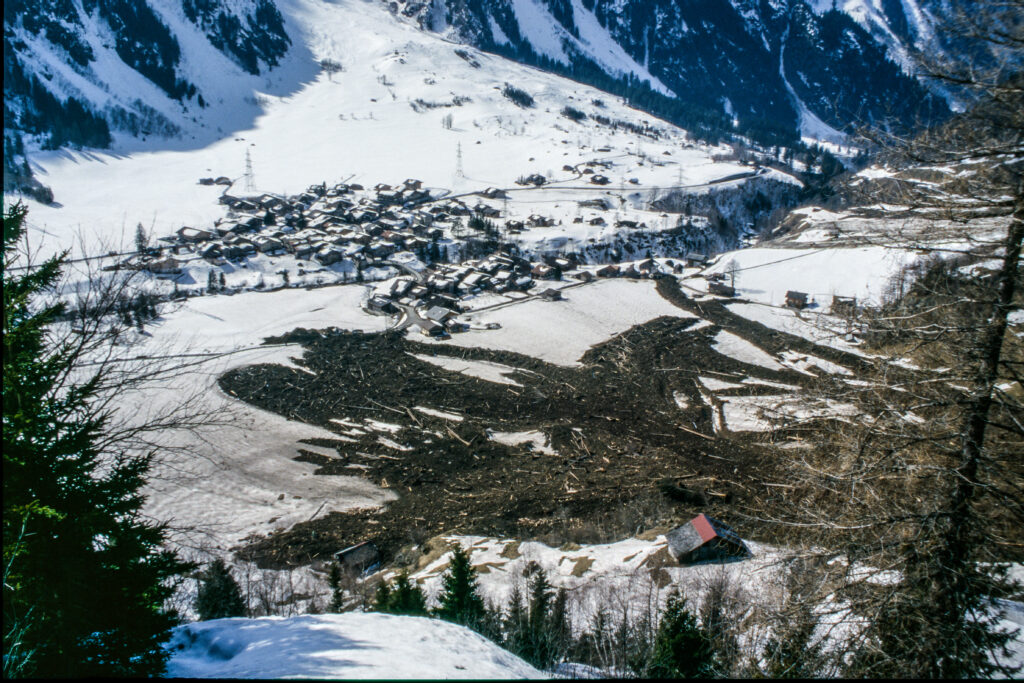
One of the main hazards the region has faced has been avalanches and, over time, the villagers have developed an understanding of them, and identified avalanche-safe areas for construction. As a result, the risk posed by avalanches to the present settlement area is currently considered to be low.
“One must simply have respect for avalanches. And when you’ve always lived here… I would say that I am beginning to get a bit of a sense for when they are coming. But you can always be wrong. You can never say I have this under control, nothing is going to happen to me. That is what shapes the people here somewhat: dangers. And one can’t avoid them, in a way.”
However, as climate change increases precipitation, melts the glaciers, and thaws the permafrost, the mountainsides are becoming less stable – with the result that new hazards are arising in areas that were previously considered safe.
“When it snows heavily, then you tell the small children that they can’t go beyond the village. For them, that is self-evident: you know you stay within the village.”
Unstable Slopes
In August 2005, following days of heavy rain, a debris flow of over 500,000 cubic meters swept down the channel of the Rotlouwi creek and into the valley below, covering the cantonal road and landing in the bed of the Aare river just downstream from the village of Guttannen. The subsequent backlog of water in the Aare caused a new channel to form, directing the water towards the village. While fortunately nobody was injured, the cost of the damage was several million francs.
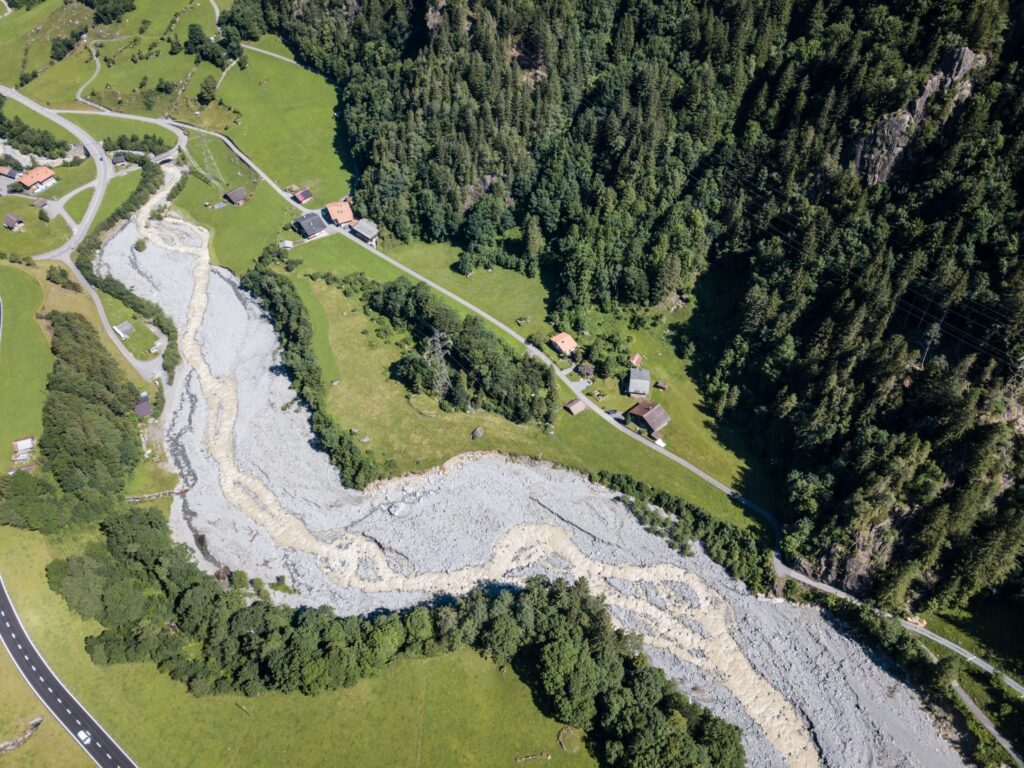
“The masses… the masses were coming and coming and coming. And then the water came into the village, and at [our house] it was in the cellar relatively quickly. At this point, people were already being evacuated to the Bären [Hotel]. That was at 10 o’clock in the evening, and we couldn’t have gone down on foot then. A pretty torrential stream was flowing down. And then they came with a giant behemoth of a machine, and we all stepped into the front loader with our backpacks, and they drove us down to the Bären [Hotel]. I do still think about it sometimes. There was no fear, somehow. We just acted.”
A number of subsequent debris flows have occurred at Rotlouwi, while a little further downstream from Guttannen at Spreitgraben – a steep channel situated on the northeastern flank of the Ritzlihorn mountain – approximately twenty debris flows have occurred since July 2009. These flows have resulted in a cumulative volume of 700,000 cubic meters of material being deposited into the Aare River, with boulders of over 700 tonnes being dislodged from the mountainside.
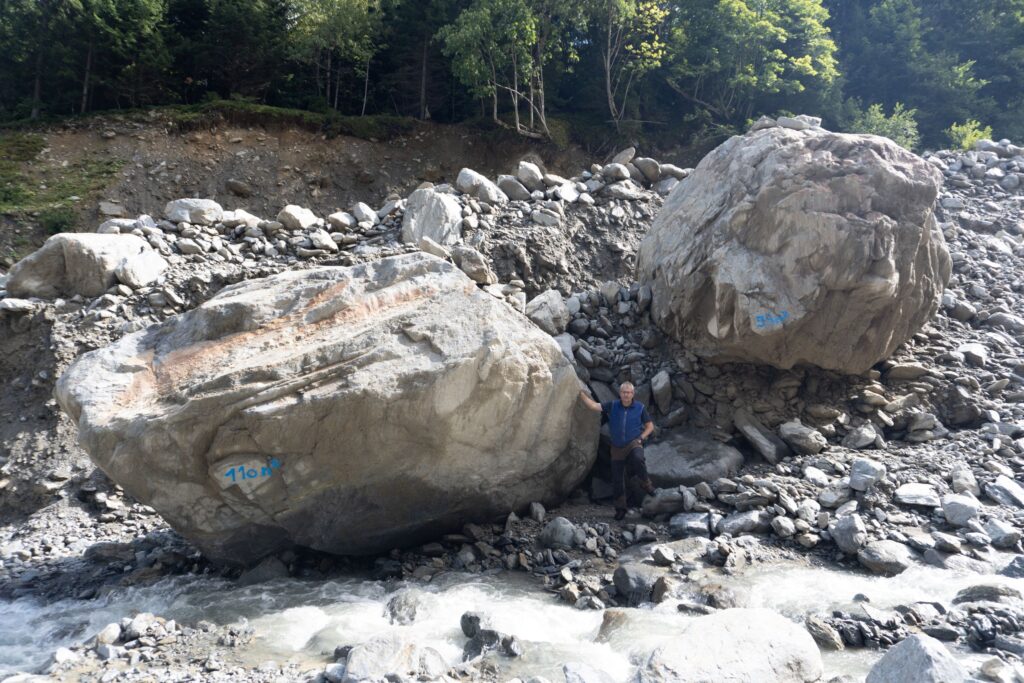
“I was scared once, and it was on a Sunday. We were all here, and then my daughter said “Oh, look! Look there!” And then Hans, my husband, shouted “Lay on your stomach!” He sprang over to our eldest son and told him to “Get up! Be quick! Be quick!” And then a dust avalanche came. Just as we were hidden in the back and we were holding each other, it went WHOOMPH! And we didn’t know whether the windows would hold.”
This hazard also poses a threat to the cantonal road to the north that, for much of the year, is the only route linking Guttannen to the outside world; the Grimsel pass that connects the village to the south is usually closed between October and May due to heavy snowfall.
For an already isolated village of under 300 inhabitants where, due to sustained outmigration of younger generations seeking employment and other opportunities, every third person is over 65, any such road closure could have severe consequences.
“There has been an excitement, there has been a unity in the village… a freedom. Nobody comes, we are for ourselves. There have been festivities in the Bären [Hotel] from time to time. No closing time. No one could come to check. We were among ourselves. That, especially as a young person, is the excitement. Later on, maybe, you think about it more. If someone would fall ill… Today, you can go by helicopter. But if the weather is really bad, even a helicopter can’t fly. Then it might look a bit different. Then you worry more. But it never scares me.”
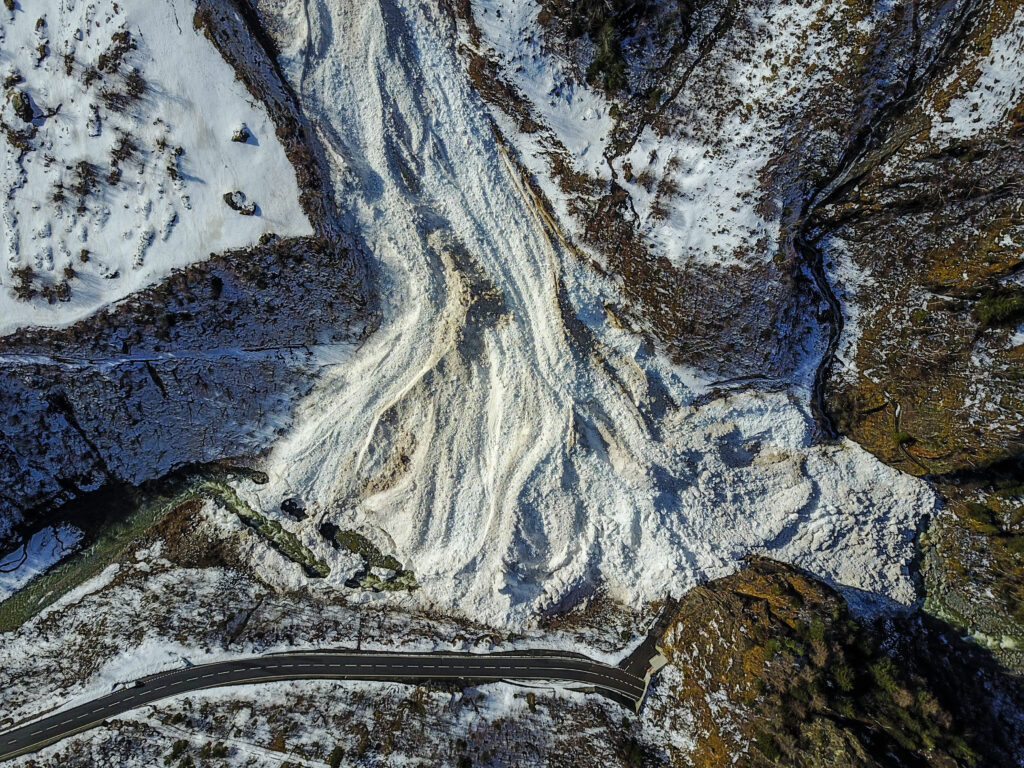
Safeguarding a Community
In the face of evolving threats to Guttannen’s future, the local community has come together. When the Grimsel Region Climate Adaptation Strategy was launched in 2016 – part of a pilot project by the Swiss federal government on addressing and managing climate change – the village founded the association Guttannen Bewegt (‘Guttannen Moves’) to further develop and implement the measures formulated there.
Central to these adaptation measures has been constant hazard monitoring and regular risk assessments. Based on the data and information gathered, decisions are then taken regarding which safety measures to introduce, such as reinforcing protective structures or updating the natural hazard zoning of the area to account for changing risks. There is also an early warning system in place to alert residents to any danger, which extends to automatically changing traffic lights in the vicinity to red to prevent motorists from entering the hazard area.
“I’ve been told that if we do something now, we won’t notice it for another 30 years. We don’t do it for ourselves, we do it for the next generation. And now [humanity] is at a stage where I think we have to go over the books a little bit in the world, [think about] what we really do. If we keep going like this, it’s not just us here in the mountains who have a problem, others will have a problem too.”
However, it is not only against natural hazards that the community is fighting; Guttannen is also rallying against its declining population and, in particular, the absence of families and young people. In 2019, with fewer than ten pupils enrolled in Guttannen’s primary school, the Canton of Bern took the decision to close it. Thanks to the efforts of the local community, a private school was found to step into the breach and secure the school’s short-term future. In the hope of attracting young families to the area and keeping the school open in the longer term, the community subsequently invested in four chalets to offer as affordable housing. It went into debt to do so, but the gamble paid off: towards the end of 2021, the first family moved in. Recent world events have also had an impact on the local population. In March 2022, the number of pupils at the primary school increased significantly with the arrival of 12 Ukrainian refugee children.
And Guttannen is opening up its community in other ways, too. It has installed an Ecocapsule, the first micro hotel of its kind in Switzerland, in order to welcome tourists. What is more, the village is now home to an ice stupa; this small artificial glacier serves both as an attraction for winter visitors and is central to a research project being conducted by the University of Fribourg that aims to study freezing and melting processes. The findings of this project are being applied in Ladakh, an arid region in the Indian Himalayas, in order to help tackle future water shortages and support local climate change adaptation.
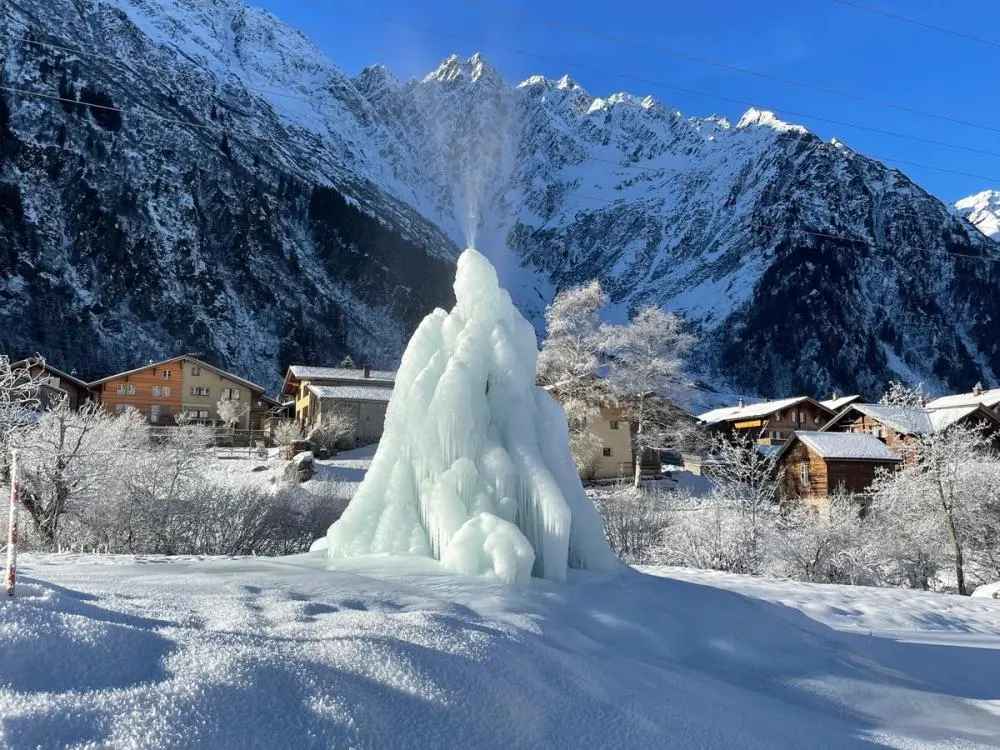
“I wish that here in the village, which is actually experiencing climate change very strongly, people would also make the connection to their own everyday lives. In other words, [people would] see what is happening here… the slopes that are sliding are to do with our behavior, our everyday behavior. Of course, not that one points the finger at a mountain village. We live like the others. But that one says, we see this [climate change] so directly and we want to contribute to doing something about it through own behavior.”
By holding symposia and hosting excursions for university research groups and other stakeholders learning about and developing solutions to issues around climate change in mountain regions, Guttannen has also positioned itself as a useful knowledge partner – and not just for scientists and practitioners. Most recently, Guttannen launched an audio theme trail, Das Wetter und Wir, inviting visitors to the village to listen to local residents reflect on how they deal with weather extremes and climate change, and how weather shapes their everyday lives. The village hopes that, by sharing their collective experience, they might serve as a positive example of climate-resilient development.
The path ahead for Guttannen may be uncertain, but its long history is testament to the strength and ingenuity of the people who have lived there over the centuries. Now, as the villagers come together to secure their community for the future, they are learning to live alongside new challenges and create new opportunities, continuing to adapt to life in our changing mountains.
“One knows the problems here and lives with them. And can deal with them. And when it has to be that way, then I’ll leave too. I’ll leave in good time, but I won’t immediately. I won’t immediately run away. Because for those who live here, we are actually attached to this place Guttannen. And it is just… home.”
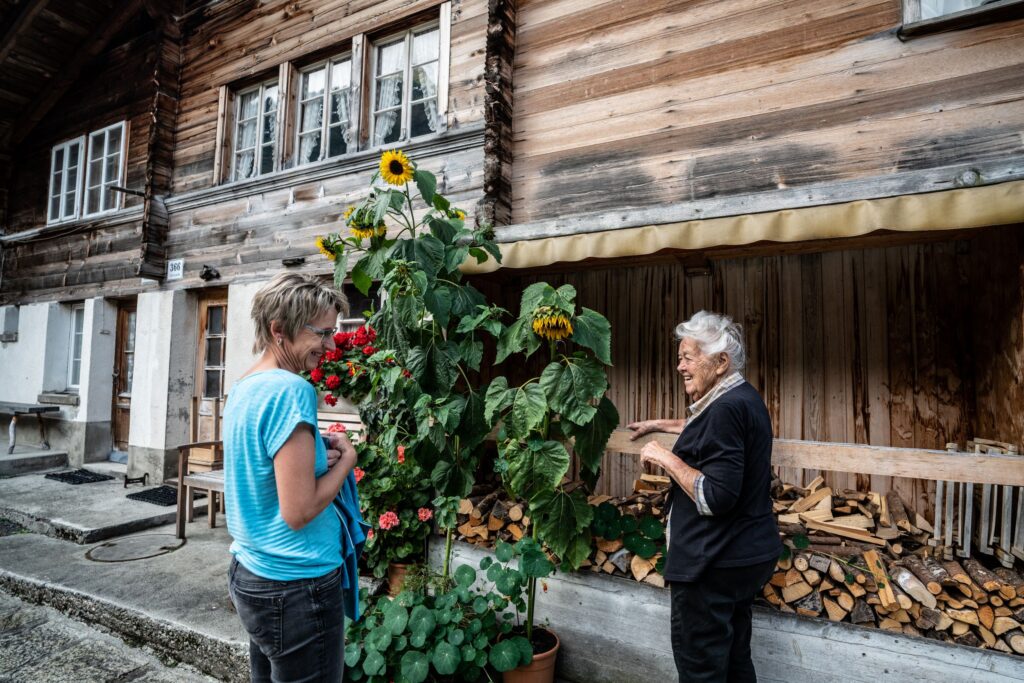
With thanks to the community of Guttannen for their kind permission to share their translated voices from Das Wetter und Wir in text form here. Das Wetter und Wir can be experienced in Guttannen year-round.
Header image credit: Daniel Bürki


